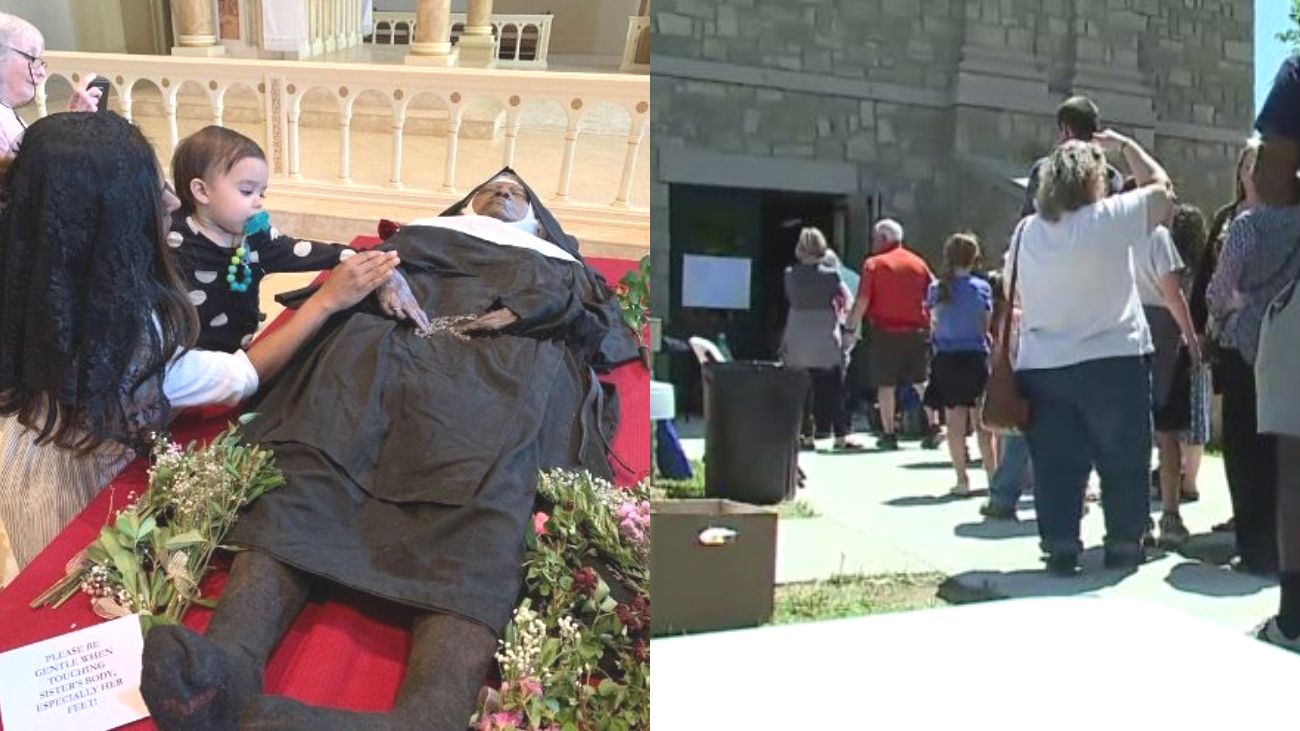Hundreds of people are traveling to a monastery in a small Missouri town to view a nun’s body that seemingly has no signs of decay four years after her death.
Nuns Body “Incorrupt” – A Sign of Holiness
The news quickly spread on social media about the unusual state of the remains of the contemplative order’s African American foundress, drawing hundreds of pilgrims to the monastery in rural Missouri.
Sister Wilhelmina Lancaster founded the Benedictine Sisters of Mary, Queen of the Apostles, a monastery in Gower, Missouri, about an hour outside of Kansas City.
Lancaster’s body was exhumed on 18 May so it could be moved to its final resting place in a monastery chapel, four years after she died in 2019, reported the Catholic News Agency.
Exhumers found a layer of mold on Lancaster’s body, likely due to condensation in the cracked coffin, reported Catholic News Agency. But little of Lancaster’s corpse or her habit decomposed while she was buried.
In Catholicism, bodies that defy the decomposing process are known as “incorrupt”, which is a sign of holiness and later justification for sainthood. The process for sainthood has not been started for Lancaster, said the Bishop Johnston, the Diocese of Kansas City-St Joseph, in a statement.
Sister Wilhelmina Lancaster
Many people want to know more about this woman who, at 70, founded the order of sisters best known for their chart-topping Gregorian chant and classic Catholic hymn albums.
The discovery has captured the attention of some church members and prompted an investigation.
The Diocese of Kansas City-St. Joseph stated the discovery:
The condition of the remains of Sister Wilhelmina Lancaster has understandably generated widespread interest and raised important questions. At the same time, it is important to protect the integrity of the mortal remains of Sister Wilhelmina to allow for a thorough investigation.
Bishop Johnston is working to establish a thorough process for understanding the nature of the condition of Sister Wilhelmina’s remains.
Incorruptibility has been verified in the past, but it is very rare. There is a well-established process to pursue the cause for sainthood, but that has not been initiated in this case yet.
Bishop Johnston invites all the Faithful to continue praying during this time of investigation for God’s will in the lives of the Benedictines of Mary, Queen of Apostles; for all women religious; and all the baptized in our common vocation to holiness, with hope and trust in the Lord.
The statement from the diocese notes, “Incorruptibility” is very rare and a “well-established process to pursue the cause for sainthood,” but the process has not begun in Lancaster’s case.
Rosary Procession After May 29
According to the Catholic News Agency, the body will be laid out in the sisters’ chapel until May 29, when the sisters plan a rosary procession.
After the procession, Sister Wilhelmina’s body will be encased in glass near the altar of St. Joseph in the chapel to welcome devotees.


